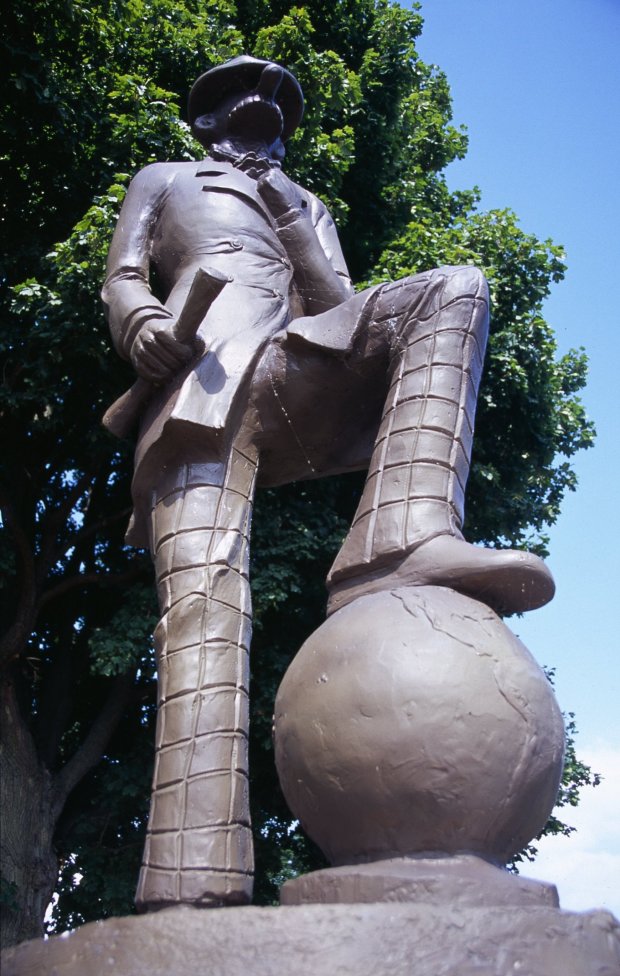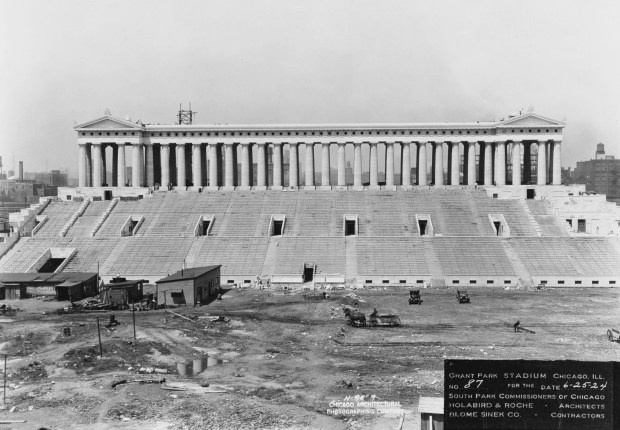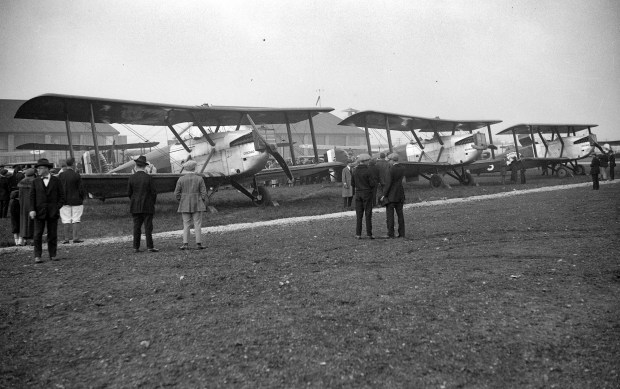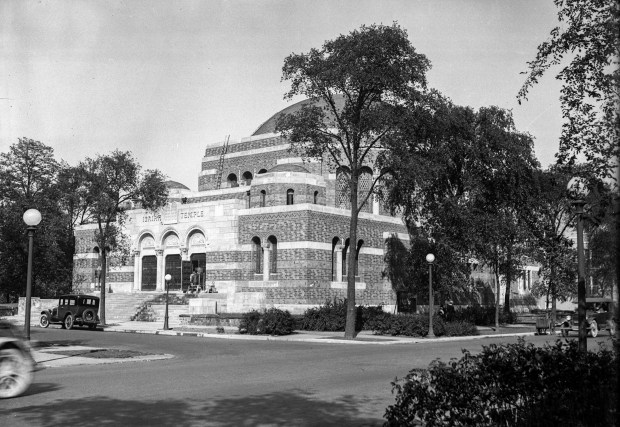September is not quite over, but we’re ready to see what Paul Durica found in his continuing search of the Tribune’s archives from a century ago.
Durica, who is director of exhibitions for the Chicago History Museum, is also chronicling these finds on his website, pocketguidetohell.com.
Chicago history headlines
- The Chicago Temple is turning 100. Its birthday gift to itself? Fixing its historic organ.
- BMO celebrates 40 years in Chicago by jettisoning the Harris name. Goodbye Hubert, hello BMO Guy.
- Derrick Rose retires from the NBA after 15 seasons. The Chicago native and Bulls star was the youngest MVP in league history.
- How many more losses do the Chicago White Sox need to break the modern-day record?
- Our culture of corruption: Read the series on Illinois’ notorious political legacy
Sept. 4, 1924: Temples Isaiah and Israel merge
Rabbis for Temple Israel (53rd Street and South Michigan Avenue) and Temple Isaiah (Hyde Park Boulevard and Greenwood Avenue) unanimously voted to unite their congregations.
The united body would make their home in Kenwood at the new $350,000 (or roughly $6 million in today’s dollars) synagogue, which was designed by Chicago architect Alfred S. Alschuler, who also created the London Guarantee & Accident Building at Wacker Drive and North Michigan Avenue and the former Chicago Mercantile Exchange building. The Byzantine architecture-inspired sanctuary includes an eight-sided dome that rises 80 feet above the floor, a smoke stack disguised as a minaret, stained-glass transoms, and sunburst windows with wreath details. The site was dedicated as the temple on Sept. 12, 1924.
KAM Isaiah Israel, the oldest Jewish congregation in Chicago whose former home was Pilgrim Baptist Church, recently embarked on a restoration of the facility.
Sept. 6, 1924: Andy Gump for President

After World War I, as comics were becoming daily staples in an increasing number of papers, the Tribune’s bosses, cousins Col. Robert R. McCormick and Capt. Joseph Medill Patterson, started to cultivate their own comics.
Patterson helped create and nourish, among many other strips, “The Gumps,” which was introduced in the Tribune on Feb. 12, 1917. The patriarch of the family was Andrew (Andy) Gump, whose creator Sidney Smith claimed invented the flower pot and introduced the polka dot tie to the United States.

After a successful run for Congress in 1922, Smith launched an independent presidential campaign for Andy Gump that began with the unveiling of a bronze statue of the character at the entrance to Smith’s estate on the south shore of Lake Geneva in Wisconsin. Tribune “A Line O’Type or Two” columnist Richard Henry Little spoke about Gump’s platform on the cartoon character’s behalf.
“Andy Gump fears no man. He has come among these simple people, and found quiet here, and nearness to nature, simple hearts in these modest huts clustered around the shores of Lake Geneva, because he wants to stay close to the common people,” Little told the crowd. “He is going to save us from all our ills.”
Gump continued to run for president until the popular comic strip ended on Oct. 17, 1959. The statue now watches over the lake near the gazebo in Lake Geneva’s Flat Iron Park.
Also on Sept. 6, 1924: Grant Park Stadium opens

Municipal Grant Park Stadium hosted its first event — an athletic field day for thousands of Chicago police officers.
And though the facility, which wouldn’t be called Soldier Field until 1925, has seen its share of football games, a variety of performers, politicians, pastors, civil right defenders and musicians have also set memorable moments inside the historic venue.
Sept. 15, 1924: World flyers land in Chicago — well, just outside it

A century ago, Chicagoans’ necks craned skyward looking for a single-engine Douglas World Cruiser bearing their city’s name.
It was on the home stretch of its journey as America’s entry in a 1924 international competition to make the first flight around the world. The United States began the journey with four aircraft named for American cities: Seattle, Chicago, Boston and New Orleans. Flyers from Britain, Portugal, France, Argentina and Italy also participated in the competition, taking off at various times through the year.

America’s flyers took off from Seattle on April 6, taking a westerly route, and were scheduled to arrive in Chicago on Sept. 13 amid a triumphant home leg of their journey. But that was set back by two days of bad weather in Ohio, their previous stopover.
The delay heightened the anticipation for Chicagoans who had followed the flyers’ journey via reports from Tribune foreign correspondents. The pilots were already familiar names as newspapers spewed out a steady stream of stories.
“Radiogram Says Heroes of the Air Are Coming,” a Tribune headline announced on July 27.
But it turned out the aviators couldn’t land their plane in their city. As the Tribune noted in an editorial on Sept. 16: “When the world flyers came out of the South and roared over the city yesterday, Chicago could offer them no airplane landing place.”
So the flyers had to touch down on a small airstrip just outside of west suburban Maywood, from there going into the city to be feted at the Drake Hotel.
But on the whole, the flyers’ visit went well.
Sept. 24, 1924: Passion drives a Little Egypt pastor and his parishioner to poison their spouses

On July 30, 1924, the Rev. Lawrence Hight delivered a moving eulogy for Wilford Sweeten. “Brother Wilford was an unbeliever in Jesus Christ and God, and I was sent that he might be redeemed,” Hight said. “I am unworthy to preach the sermon over the body of this good man.”

The irony of Hight’s words would shortly come back to haunt him. On Sept. 24, he was charged with providing Elsie Sweeten the poison that killed her husband, which she administered in a serving of homemade tomato soup, and with poisoning his own wife, Anna Hight. The Tribune pronounced it “the strangest tragedy southern Illinois has ever known.”
Want more vintage Chicago?
- Become a Tribune subscriber: It’s just $12 for a 1-year digital subscription
- Follow us on Instagram: @vintagetribune
Thanks for reading!
Join our Chicagoland history Facebook group and follow us on Instagram for more from Chicago’s past.
Have an idea for Vintage Chicago Tribune? Share it with Ron Grossman and Marianne Mather at rgrossman@chicagotribune.com and mmather@chicagotribune.com



